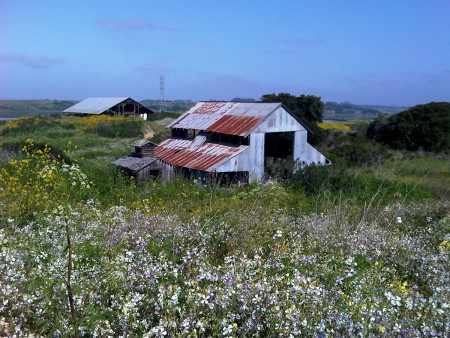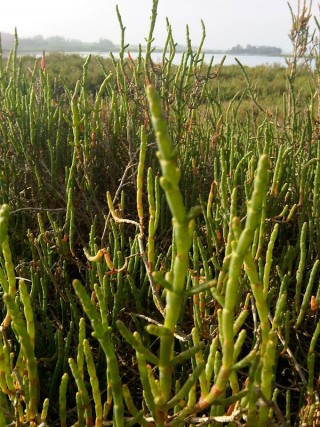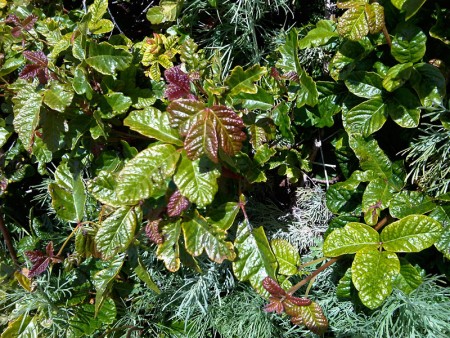Ever since I first saw it back in 1988, I’ve been captivated by the rugged beauty of the California coastline from the Monterey Bay south into the Big Sur area. Over the past couple of years I’ve been able to make periodic trips to the area; a day here, a weekend there, squeezed in around business. My wife’s family lived in Pacific Grove for years, and I suppose I’ve developed a vicarious sense of home there. Certainly the scenery there corresponds to some sort of ideal in me; I can’t help but feel at home there, even when I’m just passing through on my infrequent business trips to the area.
Last month, for a couple of brief hours, I was finally able to accomplish a goal of mine: visiting the Elkhorn Slough National Estuarine Research Reserve (and vicinity). This is a 2500-acre area (the reserve itself is 1400 acres) of marsh and tidal flats along the shores of, according to the brochure, “one of the few relatively undisturbed coastal wetlands remaining in California”:
Over 400 species of invertebrates, 80 species of fish, and 200 species of birds have been identified in Elkhorn Slough.
While at the headquarters area, with its extensive network of hiking trails, I saw the great horned owls nesting in the barn owl box on the site. Below is a picture of the barn:
It was right after leaving the barn area that I chanced across one of the rare moments of naturalist living: a mammal sighting! A bobcat happened to be crossing the trail while I was walking along it, and we looked at each other for a moment, too brief, naturally, for me to snap a photo, before the cat strolled into the head-high (to me) foliage at the trailside. I find it ironic that in all the years I’ve tried to see the bobcats at my local haunts, I’ve had extremely limited success, and on my only visit to this place, I got the best sighting I’ve ever had. Even the naturalists at the park said that they’d not seen them much.
Other sightings of note, of subjects that are a bit more photo-obliging, also occurred: here’s some pickleweed (Salicornia virginica) in Kirby Park, one of the areas of the slough:
As you can see from the map, there’s lots of mudflat for the pickleweed to do its thing:
View Larger Map
One of the interesting things about pickleweed is that its color depends on how much salt it’s taken up, and if you’re not using your cellphone camera as the result of a foolish attempt to pack lightly, you can take some interesting photos of this process at work. If, on the other hand, you’re a dang fool, all you get are blurry snapshots like the one above.
Later in the weekend, at Point Lobos, even using my cellphone, I got this great (well, usable) shot of my nemesis plant, Toxicodendron diversilobum:
I’m still using calamine lotion for the bout of itching I picked up from its eastern cousin, T. radicans, on Easter Sunday, over a month ago. Leaves of three, leave ’em be!
Here’s a small gallery of the least dreadful cellphone pix from the slough:
Next up: Point Lobos, one of the most beautiful places on the planet.
And note to self: whenever you go to California, bring a real camera!









